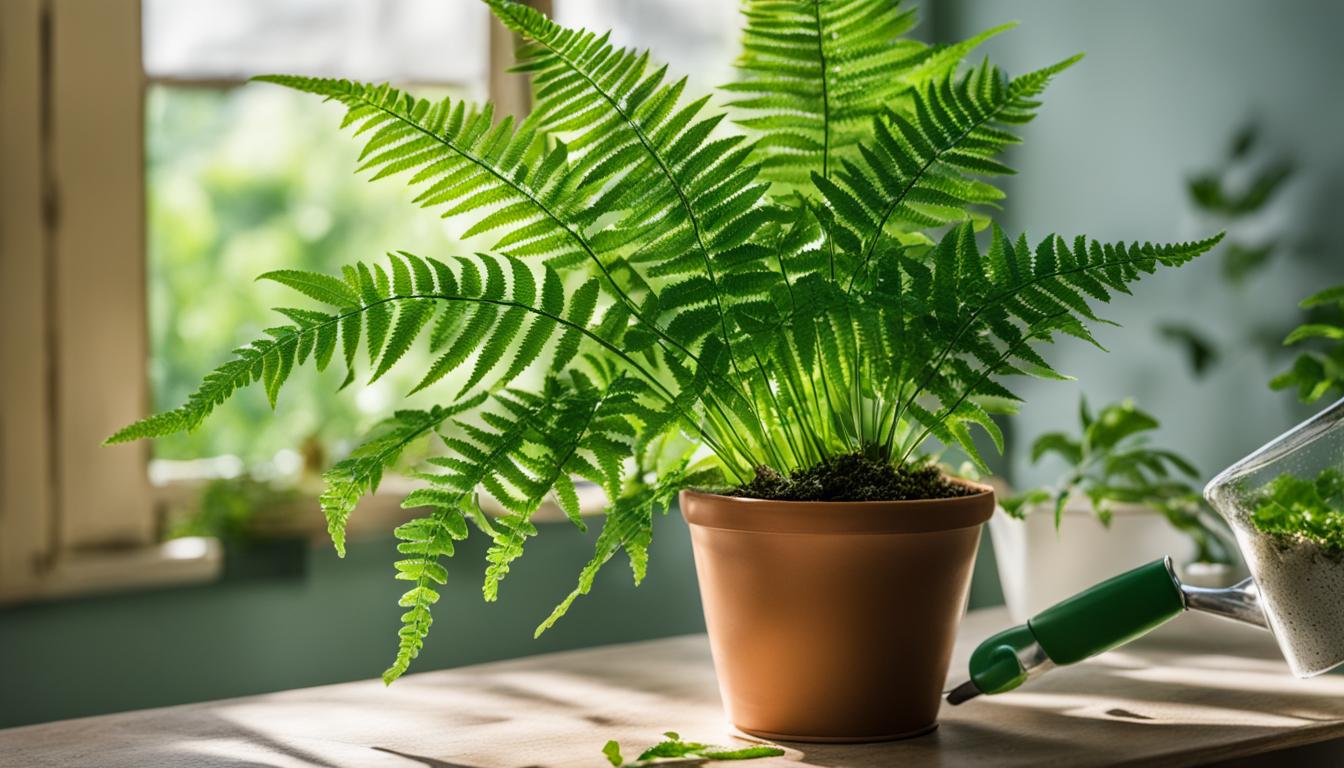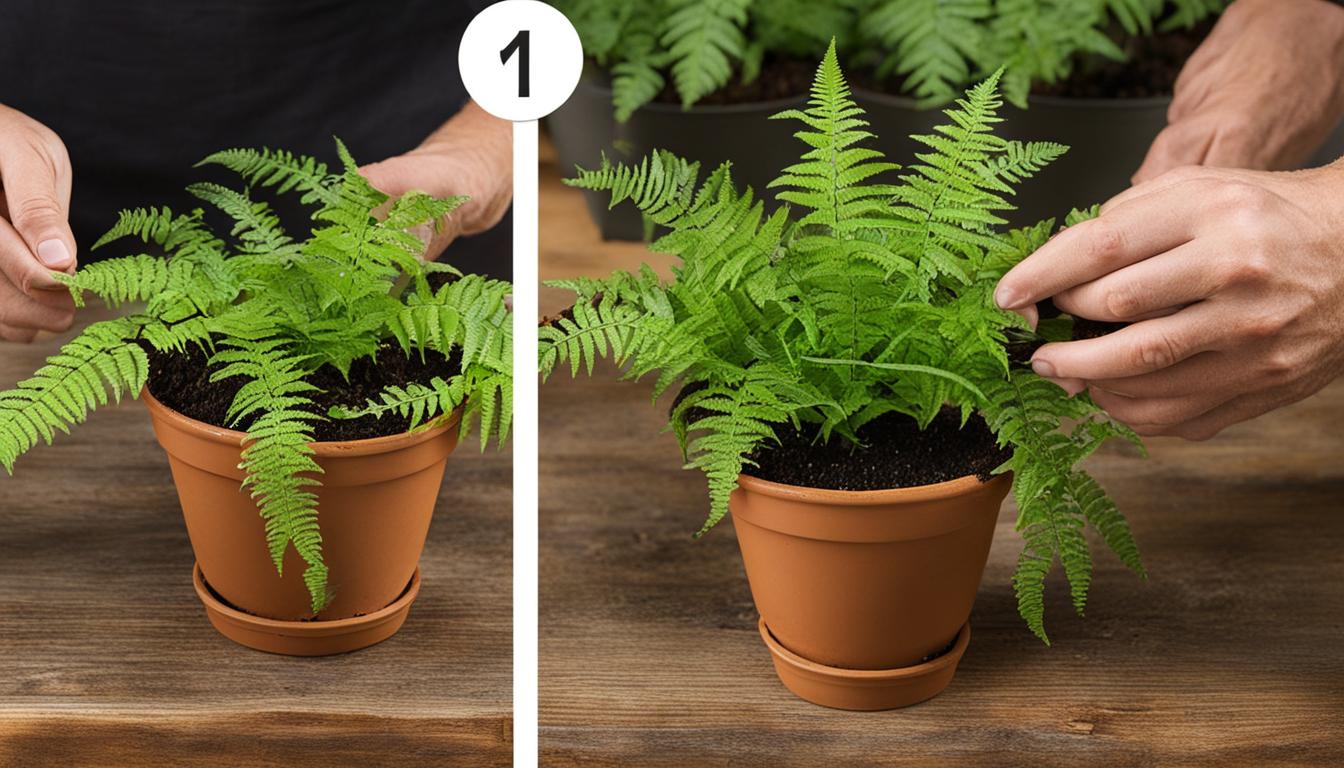The Fern Chester Plant, also known as the Jesters Crown Fern, can experience various issues that may affect its health and growth. Common problems with Fern Chester plants include watering issues, light requirements, nutrient deficiencies, and the presence of native invasive plants. By understanding and addressing these issues, you can ensure that your Fern Chester plant remains healthy and vibrant.
When caring for Fern Chester plants, it’s important to be aware of the common issues that can arise. Troubleshooting Fern Chester plant issues is essential for preventing problems and maintaining their well-being. By taking the necessary steps, you can promote the optimal health and growth of your Fern Chester plant.
Watering and Light Requirements for Fern Chester Plants
Proper care and attention to watering and light requirements are essential for maintaining the health and vitality of Fern Chester plants. By understanding the specific needs of these plants, you can ensure their optimal growth and prevent common issues from arising.
Watering Tips
When it comes to watering Fern Chester plants, finding the right balance is key. These plants thrive in moist soil, so it’s important to keep the soil consistently damp. However, overwatering can lead to root rot and other fungal diseases, while underwatering can cause the leaves to become dry and brown.
Avoid letting the soil dry out completely between waterings, but also make sure it doesn’t become waterlogged. To determine when to water, check the moisture level of the soil by gently sticking your finger into the top inch. If it feels dry, it’s time to water. Use room temperature water and aim to moisten the soil evenly. Be careful not to drench the leaves, as this can lead to leaf damage or disease.
Light Requirements
Fern Chester plants thrive in bright, indirect light. Placing them near a south-facing window or providing them with six feet of distance from a window can ensure they receive adequate light for photosynthesis. Avoid exposing them to direct sunlight, as this can scorch the leaves. If natural light is limited, you can supplement with fluorescent lights placed 6 to 12 inches above the plants.
Keep in mind that different species of ferns have varying light requirements. Some may tolerate lower light conditions, while others prefer brighter settings. It’s important to research the specific needs of your Fern Chester plant to provide the best light conditions for its growth.
Summary
- Water Fern Chester plants on a regular basis, keeping the soil consistently moist but not waterlogged.
- Check the moisture level of the soil regularly to determine when to water.
- Provide bright, indirect light for Fern Chester plants, avoiding direct sunlight.
- Place the plants near a south-facing window or use fluorescent lights if natural light is limited.

Dealing with Native Invasive Plants and Other Health Issues
Aside from watering and light requirements, Fern Chester plants can encounter various challenges related to native invasive plants and other health issues. It’s important to address these concerns to ensure the long-term well-being of your Fern Chester plant.
Invasive species like ferns, striped maple, and American beech can pose a threat to your Fern Chester plant by rapidly spreading and overpowering other species in its vicinity. These invasive plants can be quite stubborn and may hinder the growth of your Fern Chester plant. To mitigate their impact, consider employing mechanical or chemical treatments to control or suppress their growth, allowing your Fern Chester plant to thrive and flourish.
Furthermore, it’s crucial to monitor for specific health issues that can affect the overall vitality of Fern Chester plants. Anthracnose, botrytis, and verticillium wilt are some common ailments that can compromise the health of your plant. Promptly addressing these issues by implementing appropriate measures, such as targeted treatments or adjustments to the plant’s environment, will help safeguard the well-being of your Fern Chester plant.
By staying vigilant and taking proactive steps to prevent problems and address health issues, you can ensure that your Fern Chester plant remains in optimal condition. Remember, a healthy plant not only enhances the aesthetic appeal of your space but also contributes to a positive and vibrant living environment.
FAQ
What are some common problems with Fern Chester plants?
Some common problems with Fern Chester plants include watering issues, light requirements, nutrient deficiencies, and the presence of native invasive plants.
How should I water my Fern Chester plant?
Fern Chester plants prefer moist soil, so it’s important to water them regularly. However, overwatering can lead to root rot, while underwatering can cause the leaves to become brown and crispy. Finding the right balance is key.
What kind of light do Fern Chester plants need?
Fern Chester plants thrive in bright, indirect light. Placing them near a south-facing window or providing them with six feet of distance from a window can ensure they receive adequate light for photosynthesis.
How can I deal with native invasive plants that may affect my Fern Chester plant?
Native invasive plants such as ferns, striped maple, and American beech can rapidly take over large areas and crowd out other species. Implementing control measures to kill or set back these invasive plants, such as mechanical or chemical treatments, can help create space for the Fern Chester plant to thrive.
What are some specific health issues that Fern Chester plants may face?
Fern Chester plants may face health issues such as anthracnose, botrytis, and verticillium wilt. Monitoring for these issues and addressing them promptly can help maintain the overall health of your Fern Chester plant.



